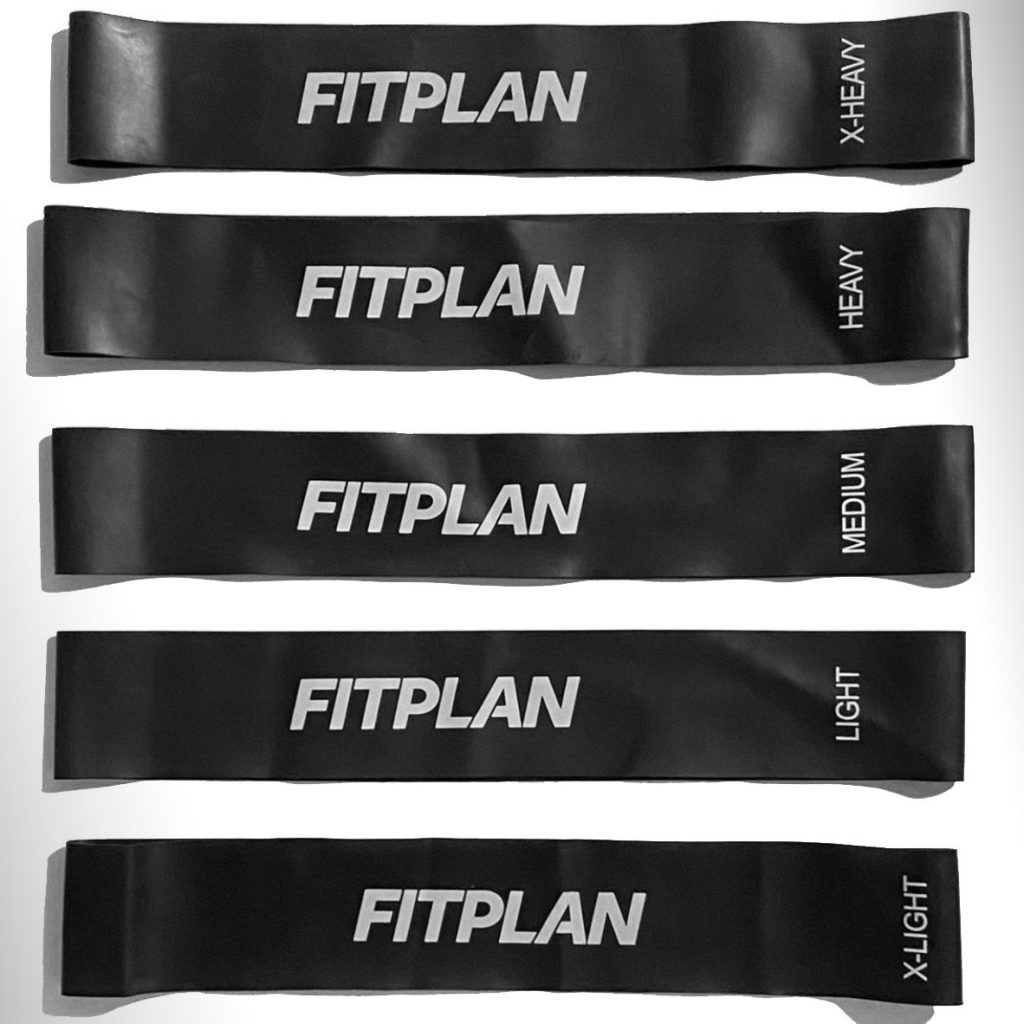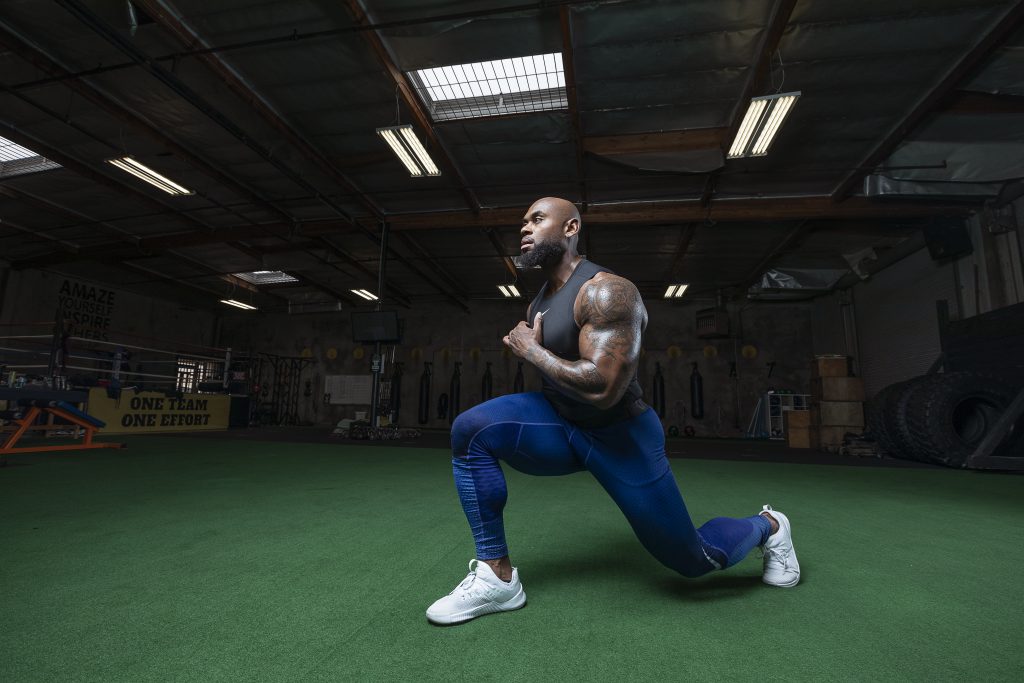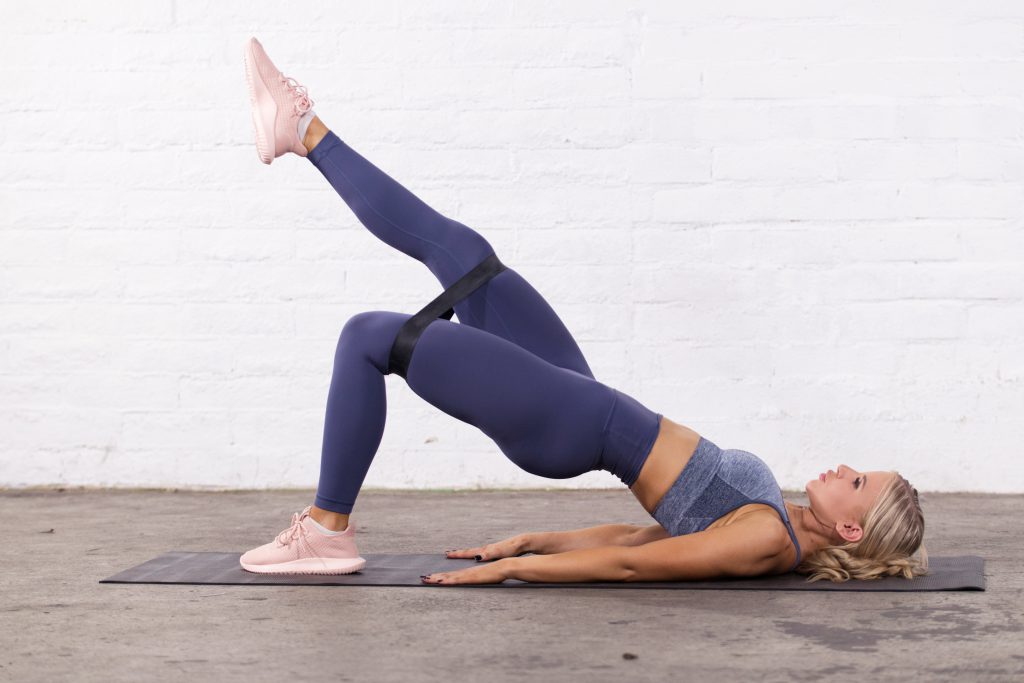The hamstrings are a series of three muscles on the back of your thigh. Alongside the quadriceps, which are located on the front of the thigh, the hamstrings are responsible for daily activities like walking, running, and jumping. Since they’re so active in common movements, your hamstrings are also some of the most injury-prone muscles in your whole body.
Like any other muscles, the hamstrings get stronger with exercise. You don’t have to head to the gym or use any exercise machines if you want to build stronger hamstrings, though. The bodyweight hamstring moves in this guide are perfect for strength in your hamstrings from anywhere that’s convenient.
Keep reading to find out how the hamstrings work, what kind of bodyweight exercises work best to build strong hamstrings, and 10 of the best bodyweight hamstring exercises for your workout routine.
(Note: Want our elite trainers to help you tone and strengthen your legs? Start your Fitplan free trial today!)
What Do the Hamstrings Do?
The hamstrings are a muscle group made up of the semitendinosus, semimembranosus, and the long and short heads of the biceps femoris. Together, these muscles act on the hip and knee joints.
Specifically, the semitendinosus and semimembranosus flex the knee and rotate the leg inwardly when the knee is bent. They also extend the hip when your torso isn’t moving. The long head of the biceps femoris helps with hip extension in preparation for a movement like walking or running.
Both heads of the biceps femoris help with knee flexion and rotating the lower leg outwardly when the knee is bent. Very basically speaking, the biceps femoris is in the middle of the back of the thigh and the other two muscles flank it on either side.
All this anatomy isn’t critical for understanding how the bodyweight exercises in this guide target your hamstrings, but understanding some basics about their function should help you recognize which part of each exercise is most important for putting a strain on your hamstrings and increasing their strength over time.
Additional Gear for Bodyweight Exercises
While you can do all the exercises we mention in this guide without any gym machines are additional equipment, you can add a few of the following items for extra comfort or a tougher workout.

Resistance Bands
Banded exercise is a great way to maintain tension on your muscles throughout an exercise. Some common strength training moves that use weights only act on your muscles in the second two-thirds of a move. Such exercises, like a bench press or dumbbell flye, can be made more challenging with the addition of resistance bands.
The same goes for the 10 bodyweight hamstring exercises in this guide. For the most intense hamstring workout possible, find a resistance band that will wrap around your thighs or attaches to an anchor point to put more strain on your hamstrings.
Helpful hint: Our Mind Body Challenge is full of banded hamstring exercises!
Yoga/Exercise Mat
When you go through bodyweight exercises, it’s usually just you and the floor. Some of these exercises aren’t performed from a standing position and even the ones that are might negatively impact your ankles if you’re standing on solid ground for too long.
A soft exercise mat is a great way to put a layer between your body and the floor. It might be for sanitary purposes if you’re at a gym, temperature reasons on hard floors like concrete, or just for preference once you get used to using it.
Exercise Ball
Exercise balls are more versatile than you probably think. They’re more than just a tool for building core strength at your desk.
You can use an exercise ball in moves such as the hamstring curl or leg bridge. An exercise ball also makes a fine platform for single-leg exercises like the Bulgarian split squat.
Free Weights
Although they are by no means required for bodyweight exercises, additional weight in the form of free weights, kettlebells, or any other portable weight makes the exercises more challenging for your hamstrings.
You can also give your upper body a bit of a workout by holding weights as you go through some of the following hamstring exercises.
10 Best Bodyweight Hamstring Exercises
Give your hamstring muscles a great workout with a few of the following bodyweight exercises.

1. Lunges
Lunges are one of the most common lower-body workouts. Your hamstrings aren’t the only muscles targeted by this simple move, either. The glutes, calves, and quads are also put to work.
The lunge exercise is simple enough to do anywhere and it’s easy enough to use as a warm-up for the rest of the hamstring exercises to come. Like many of the other exercises we’ll mention, you can use a resistance band to make the lunge more challenging or hold dumbbells to give your upper body some attention.
How to Do A Lunge
Start in a standing position with your feet a normal distance apart. Take a large step forward with your right leg and then bend your right knee until it reaches a 90-degree angle. The left knee should almost touch the ground.
When the right thigh is parallel with the floor, you’ve reached the bottom of the movement. Unless you have very long legs, your right knee shouldn’t extend past the toes of your right foot. Power through your right foot to rise back to the starting position.
The lunge works alternating parts of your hamstrings and quads, so make sure you switch to leading with the left leg to develop even strength.

2. Glute Bridge
The entire back of your legs, including the glutes and hamstrings, will be activated by the glute bridge. To make this exercise even more challenging, lay a barbell or some other weight across your lap while you do it. For comfort, we recommend using an exercise mat to avoid back pain.
You can also wrap a resistance band around your legs to keep tension on the thighs and target the hamstrings more.
How to Do the Glute Bridge
Lay an exercise mat down on the ground if you have one and lie down on your back on the mat. Lift your right and left feet and place their soles flat on the ground. Your legs should be about hip-width apart.
Pull your legs in so that your calves are perpendicular to the floor. Your arms can remain spread out to either side on the ground.
Squeeze your glutes and lift your hips and lower back so that there is a straight line running from your head to your knees. Keep your head flat on the ground and make sure your back stays straight. Hold the position for one or two seconds before returning to the starting position.
Helpful hint: Get a great cardio workout with no additional equipment during our Bodyweight HIIT at Home Fitplan!
3. Good Mornings
When people have tried the bodyweight good mornings in their routine for a while, they almost always start looking for a way to make the exercise more challenging. It’s not that the exercise is incredibly easy, but the simplicity of the bodyweight version kind of makes it feel like it’s missing something.
That being said, when you’re first starting fitness training the bodyweight good morning is one of the best for priming your core and hamstrings.
How to Do Good Mornings
Stand with your feet hip-width apart. Put your fingertips on your ears. Engage your core while hinging at the hips.
Keep your back flat as you lean your torso forward. Push your hips back so you can get your torso parallel with the floor. Once you reach that position, rise back to the starting position.
Pretty simple, right? You can step on the middle of a large resistance band and loop the other end over your neck to add more tension throughout the good morning exercise. Alternatively, you can hold weight in your arms over your shoulders to make things more difficult.
4. Bulgarian Split Squat
Traditional squats are a classic exercise for working all the major muscle groups of your lower body, including the hamstrings, glutes, quads, hip flexors, and calves. The Bulgarian variation gives you the ability to put more pressure on one leg at a time and thus give them better exercise.
You can also work one side of your body if you’ve developed uneven strength or injured one side. Regular squats build strength that will prepare you for Bulgarian split squats if you aren’t up for the Bulgarian variation yet.
How to Do Bulgarian Split Squats
You need a flat elevated surface for this exercise. Alternatively, you can also put an exercise ball to good use. Whichever you choose, you need to stand in front of the platform to start with.
Place either your right foot or your left foot behind you on the platform or exercise ball. Balance solely on your leading foot as you lower your butt just as you would in a normal squat. Lower down until the thigh on the leading is parallel with the floor.
Try to hold for one second before rising back to the starting position. Do the same number of reps on each side to develop matching strength.
5. Bodyweight Romanian Deadlift
Like the Bulgarian split squat, there are weighted versions of the Romanian deadlift as well. But whether you don’t have the lifting strength for barbell deadlifts, don’t have access to equipment, or just aren’t looking for those kinds of strength gains, the Romanian deadlift is a great bodyweight hamstring exercise.
This exercise develops the entire posterior chain, which means everything on the back of your body gets a good workout.
How to Do Bodyweight Romanian Deadlifts
Begin in a standing position with your feet shoulder-width apart. Pull your shoulders back and put your hands straight out in front of you. Bend the knees slightly to avoid lockout.
Next, move your hands forward by hinging at the waist and bending over. Keep your back straight until your torso is parallel with the ground.
If this sounds similar to the good mornings, it is. But the key difference is that you don’t put your butt out – your body should be as close to a 90-degree angle as you can get it. This also makes the Romanian deadlift easy to add weight to. All you need to do is hold weights in your hands.
Helpful hint: Loosen up tight hamstrings with the exercises in our Joga Fitplan!
6. Leg Curls
This exercise is also referred to as the hamstring curl, just to give some idea of what muscle group it primarily targets. It has a few different ways you can do it, from truly bodyweight methods to ones that require an exercise ball or something similar. It’s best to know a few of these options so you can always stretch out your hamstrings when you need to.
How to Do Leg Curls
First, let’s start with standing leg curls. Stand with your feet hip-width apart and shift your body weight backward to the left leg. Bend your knee so that the right foot goes up toward your butt. Get it as close as possible before returning to the starting position. Repeat the process with the left leg for an equal number of reps.
If you have an exercise ball, lie on the ground with your heels on top of it. Slowly bring the exercise ball toward your body by rolling your feet from the heel to the sole. Reverse the movement to get back to the starting position.
When you have nothing with you but want a bit more of a challenge, grab anything you can hold between your feet. Lie on your stomach and hold the weight with both feet, then slowly bring both feet toward your butt.
7. Sumo Squat Leg Raises
Sumo squats are great workouts for building strength in your inner thighs. They’re slightly different than traditional squats, but they aren’t any more complicated. Your hands don’t have much to do in this exercise, so if you can manage it and keep your balance, hold some weight for an extra challenge.
How to Do Sumo Squat Leg Raises
Stand with your feet wider than hip-width apart and your toes pointed slightly outward. Squat down with your back flat until your thighs are parallel with the floor, just like you would in a normal squat. As you rise back to the starting position, shift your weight to one leg.
Kick the other leg out to the side. Get it as high as you can without kicking forcefully, which could cause injury. Lower the leg and repeat the process, lifting the opposite leg on the next rep.
8. Single-Leg Deadlift
Target your balancing muscles and get your hamstrings moving in a novel way with this exercise. It’s really simple and if you have a kettlebell or other weight you can hold it in one hand to reach more of your posterior chain with a tougher workout.
How to Do A Single-Leg Deadlift
Start with your feet hip-width apart and your hands at your sides. If you have a weight, hold it in front of you.
Put your weight on either leg and lift the other back behind you by hinging at the hips. Lift your arms as your torso comes down so that they are parallel with the ground. There should be a straight line running from the tips of your fingers to the tip of the lifted foot.
Repeat with alternating legs lifted to get an even workout. A resistance band around the legs also makes this exercise more challenging.
9. Single-Leg Box Squat
You might look like you’re practicing sitting down if you do this move at the gym, but it’s still a great way to build strong hamstrings.
How to Do Single-Leg Box Squats
Find a flat bench and stand in front of it. If you want to make things harder, hold a weight plate in your hand.
Raise one leg slightly out in front of you so your entire body weight is on the other leg. Slowly bend the knee of the active leg so your torso comes down and you’re sitting on the flat bench. Rise back to the starting position without the inactive leg touching the ground.

10. Crabwalk
By far the most awkward exercise in this guide, the crabwalk is also a terrific way to get some cardio in and work on your hamstrings while also exercising some other important muscles like the shoulders, triceps, abs, and quads.
How to Do the Crabwalk
Sit down on the floor with your feet in front of you about hip-width apart. Stretch your arms out behind you with your fingers facing your hips.
Brace your core muscles and lift your hips off the ground. Start taking steps by moving alternating hands and feet, i.e. move the right hand and left foot to move forward. Keep moving as long as you can or for as much space as you have available. You can also move backward in this stance to make the most of the limited room.
Helpful hint: Find more exercises you can do with limited space in our At Home Athlete Fitplan!
Conclusion:
The hamstrings are one of the most frequently used muscle groups in the human body. Building strong hamstrings will help create more functional strength and prevent injury at one of the most prone locations for injury. Try some of the 10 bodyweight hamstring exercises in this guide during your next leg workout routine to build tons of mass and strength.
(Note: Want our elite trainers to help you tone and strengthen your whole body? Start your Fitplan free trial today!)


